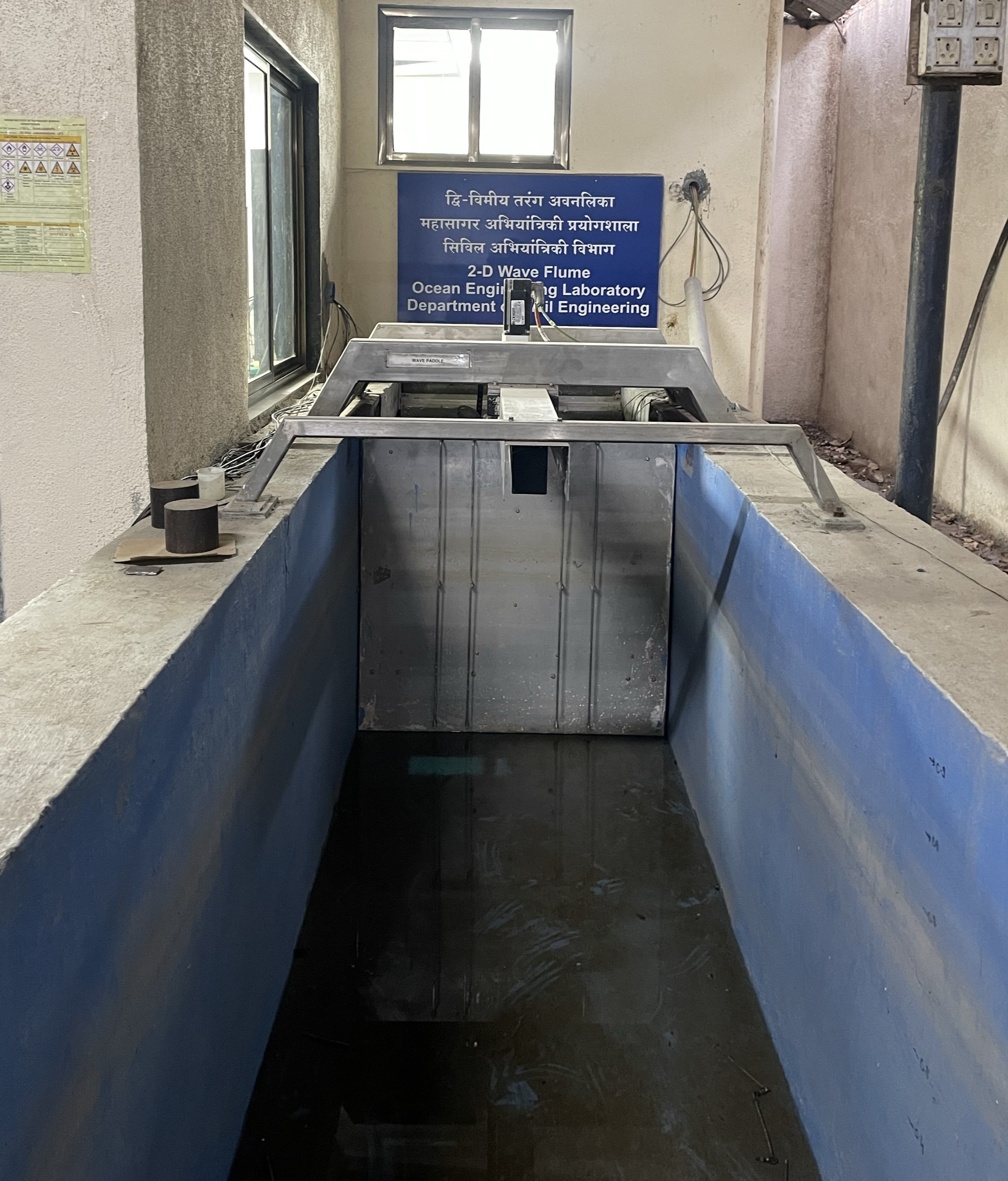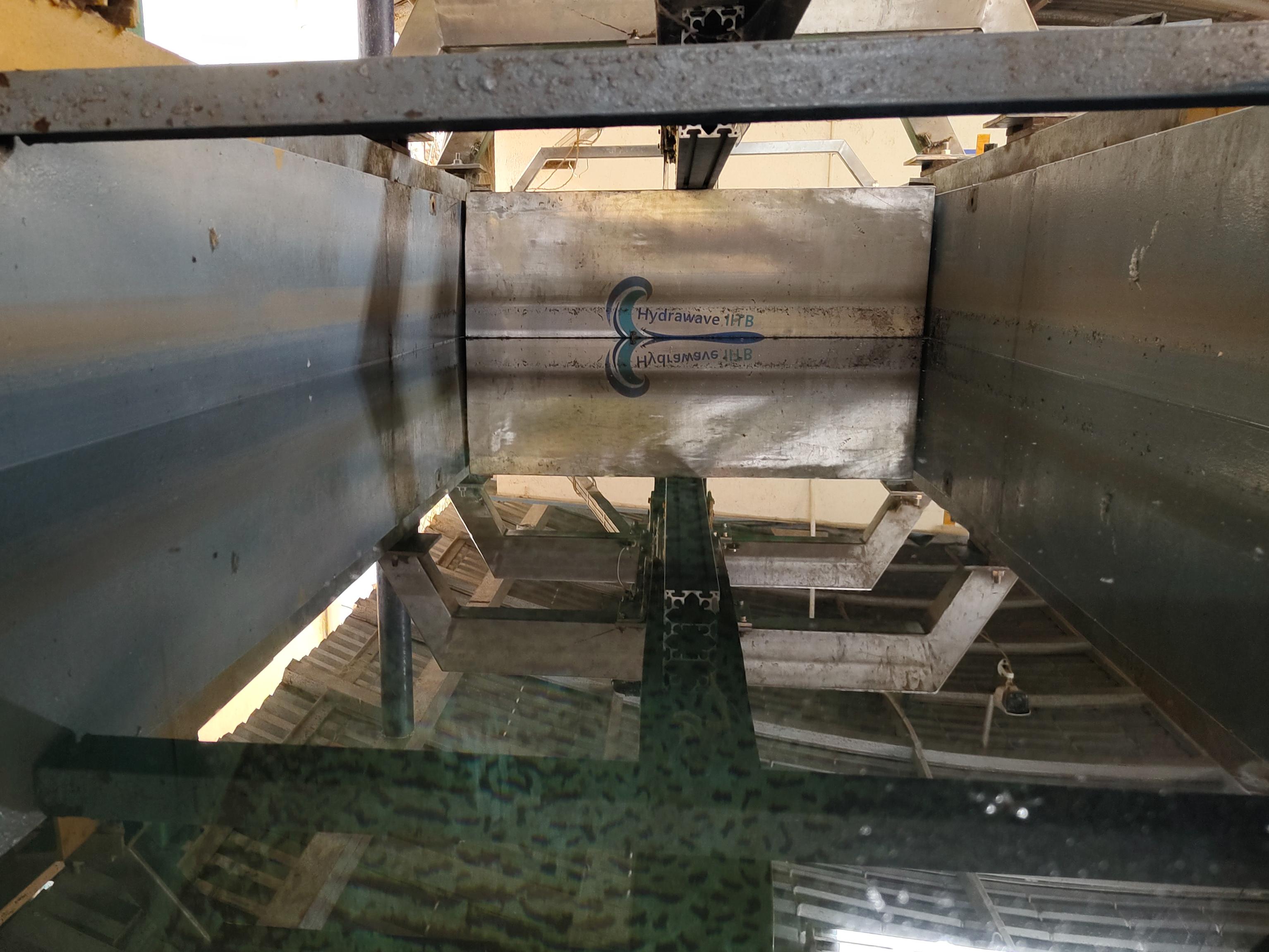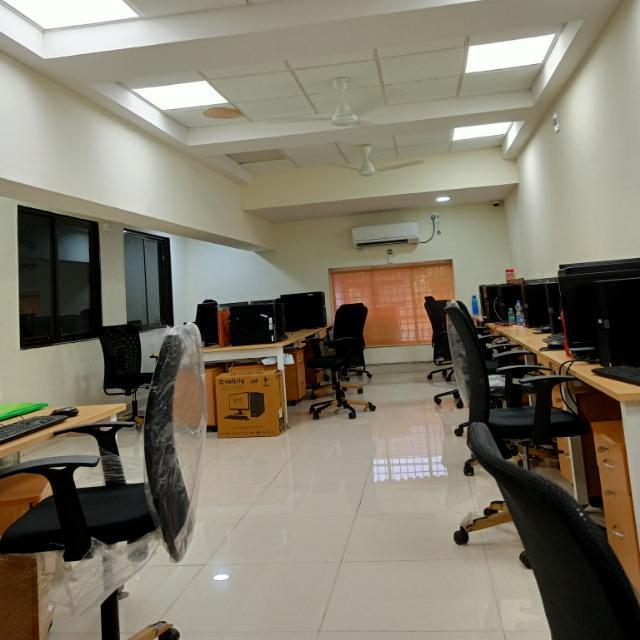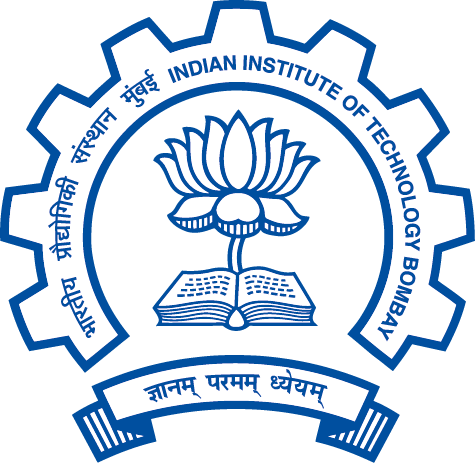Experimental Facilities
Shallow Water WaveFlume:
Specifications
The first wave flume at the Ocean Engineering Laboratory, inaugurated in 2012, has since served as a critical infrastructure for advanced experimental investigations in coastal and ocean hydrodynamics. Equipped with precision wave-generation systems and high-resolution data acquisition systems, the facility has enabled detailed studies on wave-structure interactions, hydrodynamics of offshore structures and renewable enegry systems under controlled laboratory conditions.
Dimensions: 50m length, 1m breadth and 1m depth
Type of Wave Paddle: Piston type
Capable of generating both Regular and Random Waves
Maximum wave height achievable - 20cm
Viewing window length - 2.5m
Wave-Current Flume:
Specifications
This newly inaugurated wave flume, fully indigenously developed, has been operational since 2024. The state-of-the-art facility is engineered to generate both regular and irregular (random) waves, offering precise control over a wide range of wave conditions. With the addition of this flume, the Ocean Engineering Laboratory at IIT Bombay now houses two advanced wave flumes, substantially augmenting its experimental capabilities in coastal and ocean hydrodynamics. The facility will soon be equipped with a reversible current generation system, further enhancing its ability to simulate realistic oceanic environments for comprehensive studies on wave-current-structure interactions.
Dimensions: 40m length, 1m breadth and 1.25m depth
Type of Wave Paddle: Piston type
Capable of generating both Regular and Random Waves
It consists of a pit (1.3m*1m) for investigating deep-drafted structures
Viewing window length - 3m



